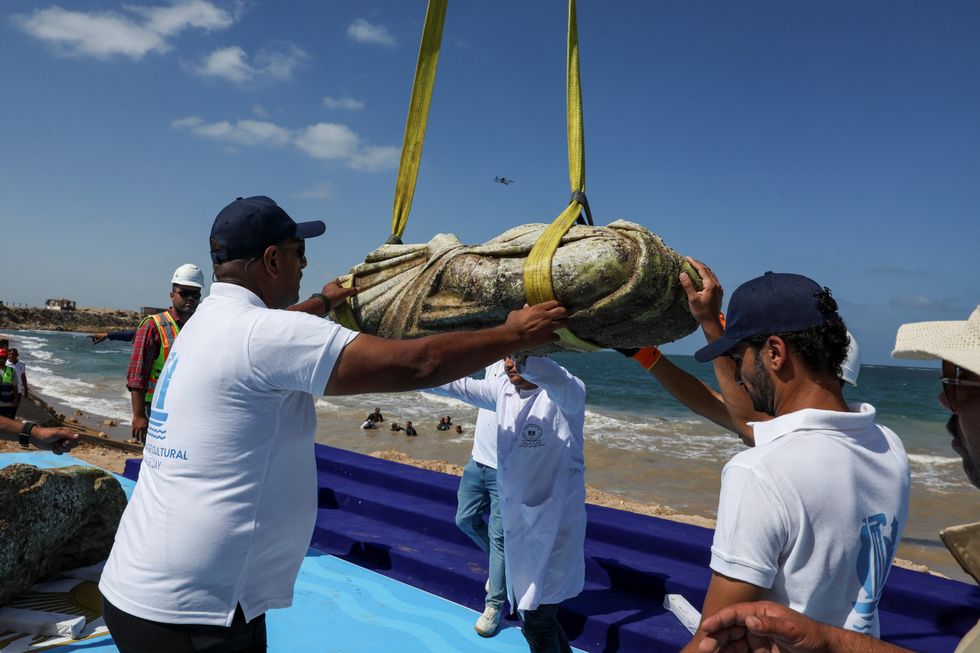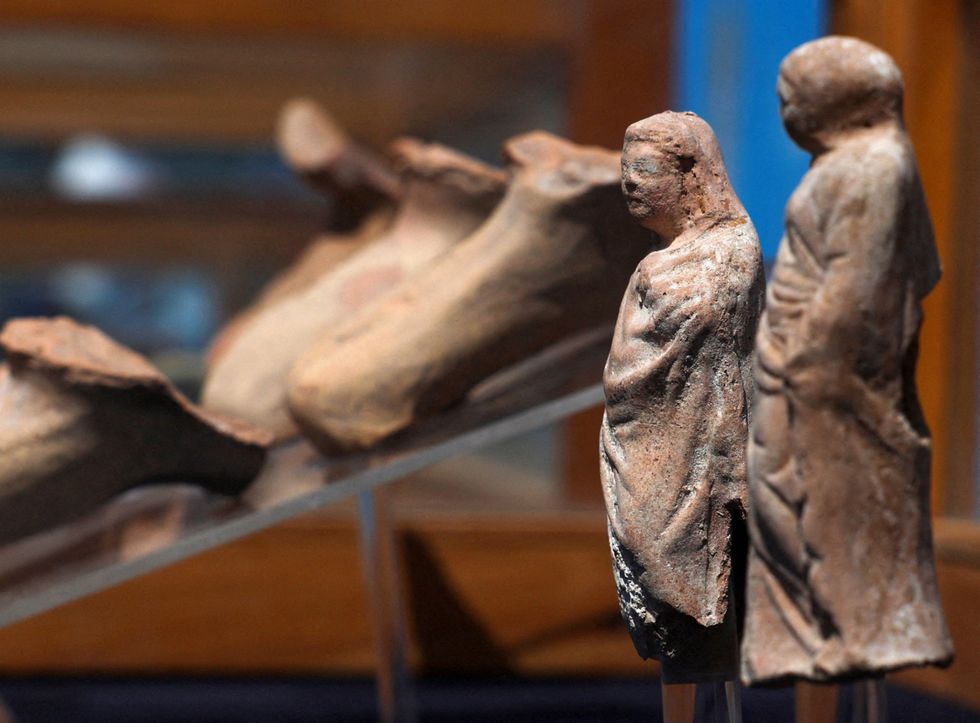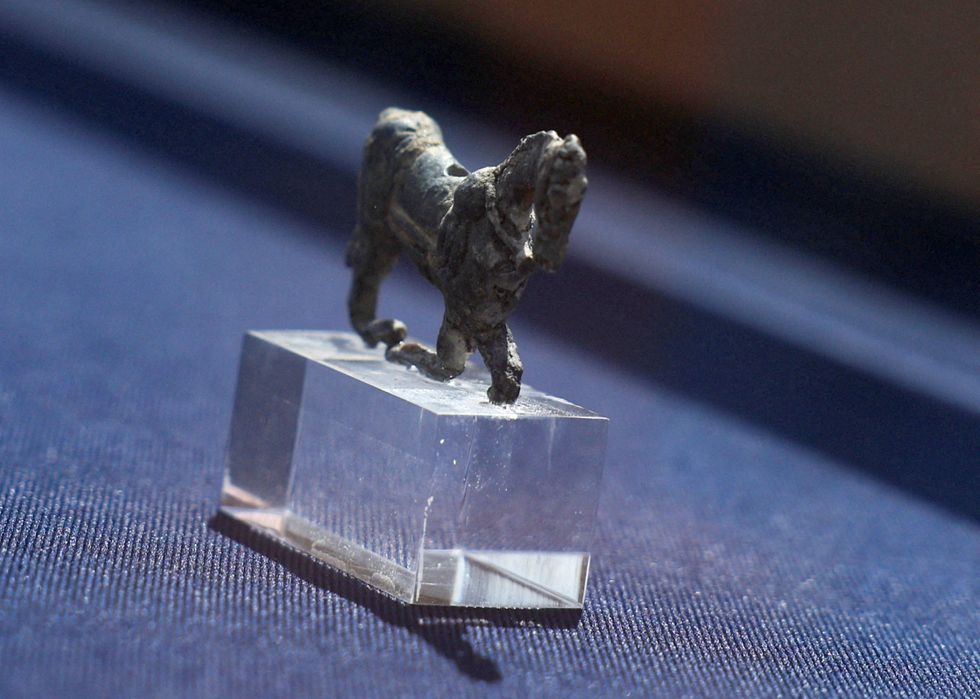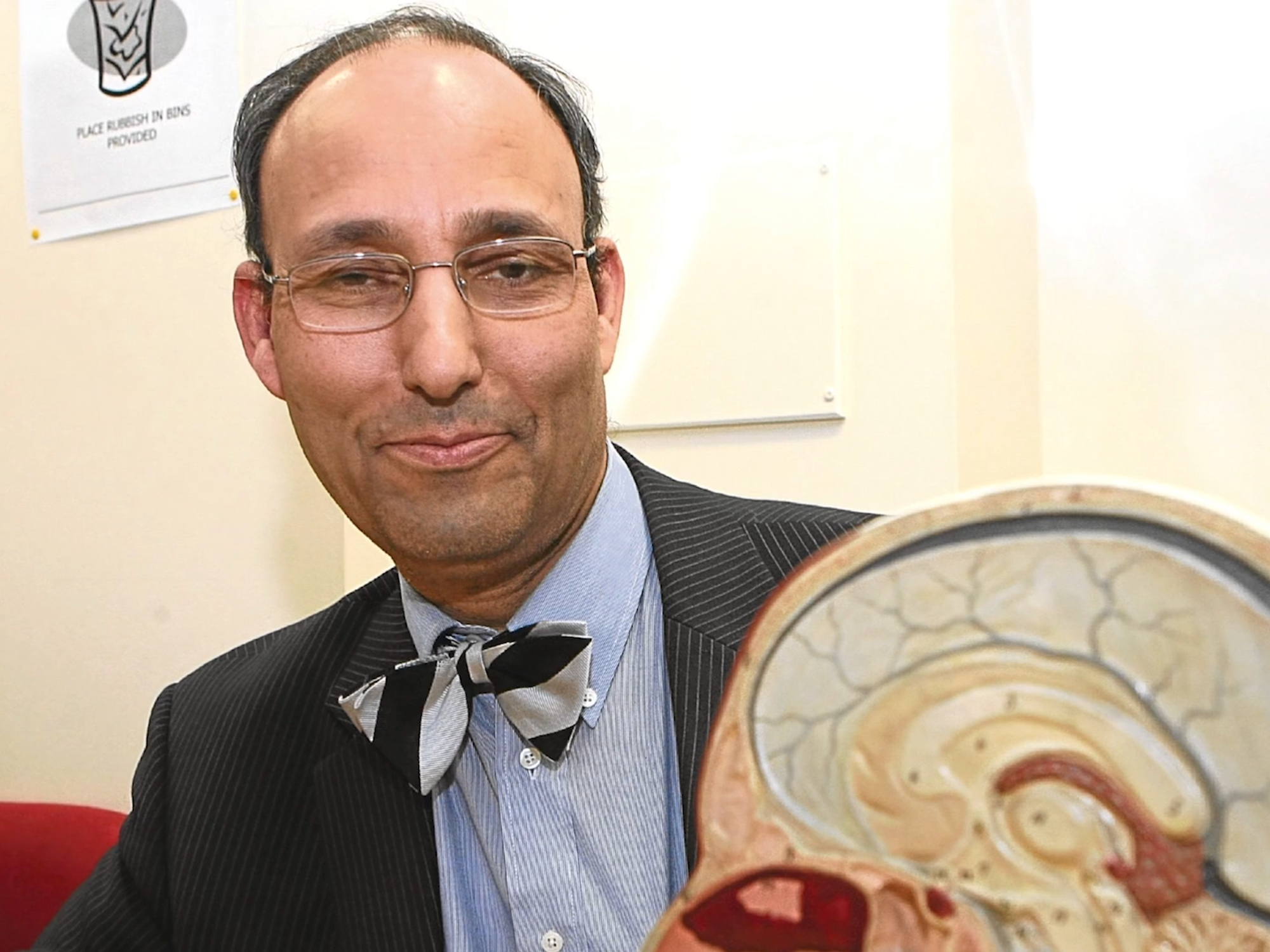Archaeologists recover sunken treasures from remains of 2,000-year-old underwater city
Multiple structures have been uncovered at the site
Don't Miss
Most Read
Latest
Archaeologists have recovered a series of ancient treasures from the remains of a 2,000-year-old underwater city.
Marine archaeologists working in Egypt completed their first significant underwater retrieval operation since the country became a signatory to Unesco's underwater cultural heritage treaty in 2001.
The recovery took place in Abu Qir Bay, close to Alexandria, where divers brought ancient treasures to the surface.
**ARE YOU READING THIS ON OUR APP? DOWNLOAD NOW FOR THE BEST GB NEWS EXPERIENCE**
Egyptian officials suggest the underwater location could be an extension of ancient Canopus, a major hub during Ptolemaic rule beginning in 305BC.
The city later fell under Roman control from 30BC before disappearing beneath the waves during the second century AD.
Among the retrieved items was an imposing sphinx carved from quartz featuring the royal cartouche of Ramesses II.
Divers also brought up a granite sculpture dating to the late Ptolemaic era, though its neck and knees showed significant damage.
LATEST DEVELOPMENTS:

Archaeologists recovered the artefacts from the underwater city
|REUTERS
Additional finds comprised a white marble figure of a Roman aristocrat, two Ptolemaic-Greek sculptures missing their heads.
An elaborate stone element that experts believe formed part of an ancient milling apparatus for grain was also discovered.
The recovery operation carefully selected specific artefacts whilst leaving numerous other discoveries in place, including a trading vessel, stone anchoring equipment and harbour lifting machinery near a 125-metre dockside structure that served smaller vessels through to Byzantine times.
Tourism and Antiquities Minister Sherif Fathi said there were multiple issues archaeologists had to overcome during the operation.

Part of the buried treasures uncovered on display
|REUTERS
He said: "There's a lot underwater, but what we're able to bring up is limited, it's only specific material, according to strict criteria.
"The rest will remain part of our sunken heritage."
Dr Mohamed Ismail Khaled, who serves as secretary-general of the Supreme Council of Antiquities, said: "Most statues found here lack heads or feet, suggesting damage from an earthquake or sudden submersion."
The ministry stated that scientific analysis would precede the release of additional information about the finds.

One of the treasures on display portrays a small horse
|REUTERS
The recovered artefacts will be incorporated into the Secrets of the Sunken City exhibition at Alexandria National Museum, which launched on Wednesday, featuring 86 pieces illustrating life during Ptolemaic and Roman times.
Egyptian authorities are considering a specialised display area or an underwater museum.
The discovery has heightened awareness about contemporary Alexandria's environmental risks, with approximately one-third of the city facing potential inundation by 2050 as it subsides roughly 3mm annually.
Earlier explorations at the submerged site revealed carved rock basins and limestone structures from the ancient settlement.








